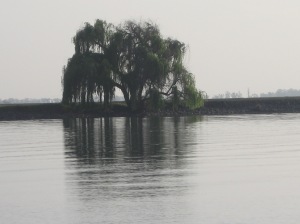FRESNO HAUNTS TOUR
Wolfe Manor
Located in Clovis, California, the mansion was built in 1922 by Italian immigrant, Anthony Andriotti. It served first as his home and later as a Sanitarium, from 1935 until the early 90s. The haunting, locals say, comes in part from the hospital wing that was added to the building in the 1950s. It’s rumored that there was overcrowding and mistreatment of the patients in the sanitarium, and the high rate of murder and suicide forced doctors and nurses to store bodies in the basement. It is considered to be one of the most haunted buildings in the United States, with numerous accounts of ghost sightings every year. It’s been featured on television, in shows about paranormal activity, like Ghost Hunters, Ghost Adventures, and Mystery Quest.
In 1996, Todd Wolfe turned the mansion into a haunted attraction called “Scream if You Dare,” which was getting nearly 20,000 visitors each year until it closed in 2003. Wolfe Manor has since deteriorated and was recently found to be a nuisance and a danger by the Clovis Board of Appeals. The house has excessive dry rot, cracking, peeling, warping, and is in violation of building, fire and electrical codes. The city plans to demolish the century old structure after Wolfe has cleared his belongings from the property.
Fresno Rotary Storyland and Playland
This small amusement park, located in Fresno’s Roeding Park on W. Belmont Avenue, is half fairytale, half carnival and was built in 1961 by the Fresno Metropolitan Rotary. There are over twenty fairytale exhibits, including The Old Woman in the Shoe, Jack and Jill, Miss Muffet, Alice in Wonderland, The Three Little Pigs, and Mother Goose. The brightly painted installments of Storyland are laid along winding paths throughout the park; children can climb inside a pirate ship and see the giant’s face looming from the clouds above Jack’s beanstalk.
During the day, the park is open as a playground and hosts kids’ birthday parties and seasonal events, but after dark, it’s home to the ghosts of missing children who have wandered into the fairytales and gotten lost. Walking through the park after dusk, visitors have reported hearing children’s laughter and softly sung nursery rhymes coming from the cartoon-colored, life-size figures. There have also been accounts of the carousel spontaneously turning on after hours to spin its bells and symbols and lights out into the vacant park at night.
Tyler Street House
This brown, two story house was built in the 1920’s, but accounts of paranormal activity didn’t surface until the 80s, when tenants started leaving, suddenly, one after the other. Alone in the house, people have heard stomping and doors slamming; they’ve seen objects mysteriously fly off tables. These encounters are believed to be the work of an angry poltergeist. Occupants say the building used to be home to an abused child that was often locked in closets and berated by his mother’s boyfriend. His restless soul still roams the rooms of the Tyler Street House today.
Craycroft House
This haunt is frequented by the ghost of Frank J. Craycroft who started building the house in 1927. During construction, he was shot by a brick mason and died months later, before the project was completed. The house was built with red brick in English-Revival style so that Craycroft could display the insulating properties of brick buildings to the residents of Fresno. People who have entered the house since Craycroft’s death have heard yelling and glass shattering. Today, visitors can only view the house from the outside, from behind two chain-link fences that guard it. The windows are boarded up and the brick is crumbling. It’s rumored that Craycroft will be haunting rubble if a new buyer doesn’t renovate soon.
